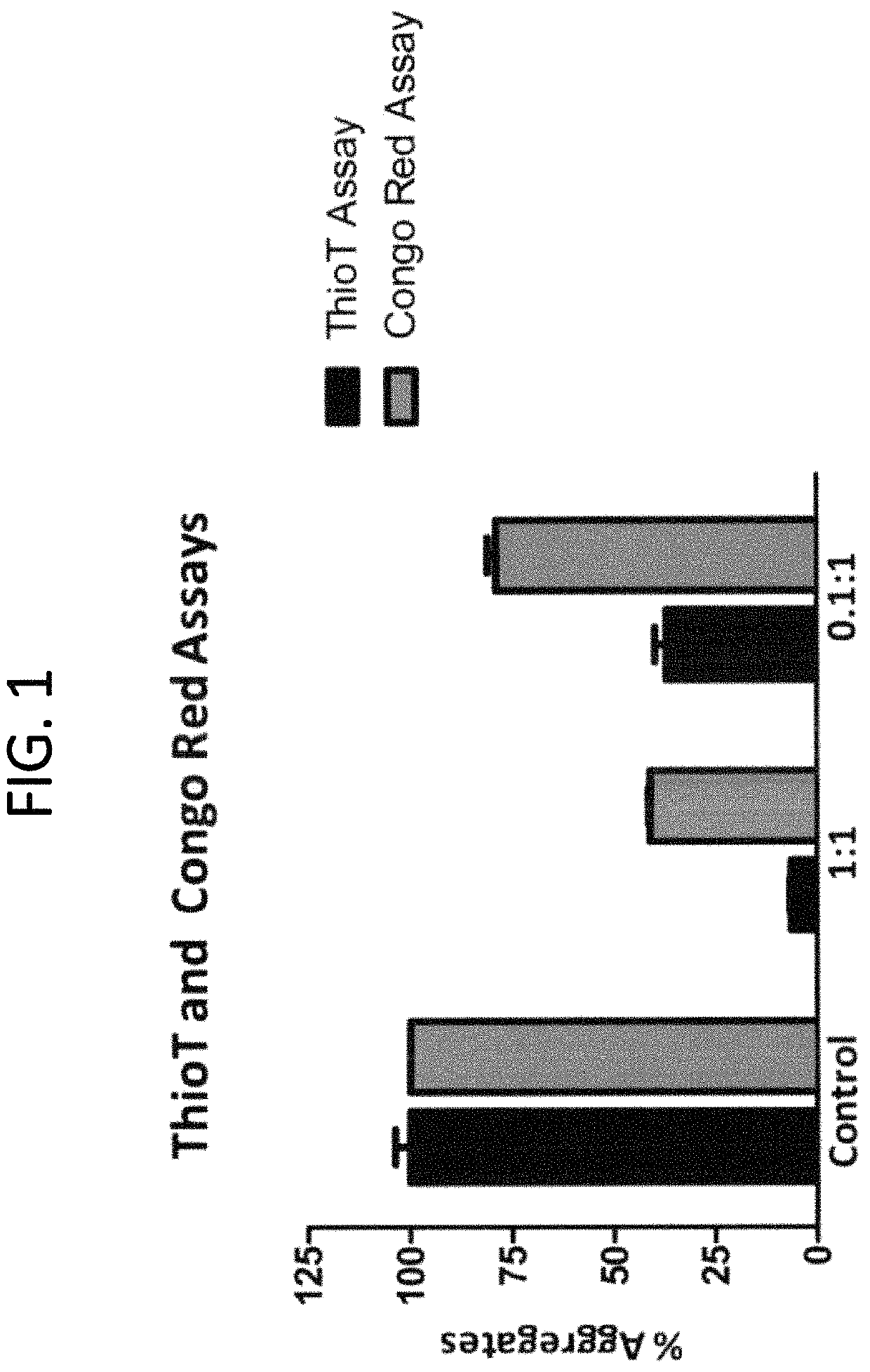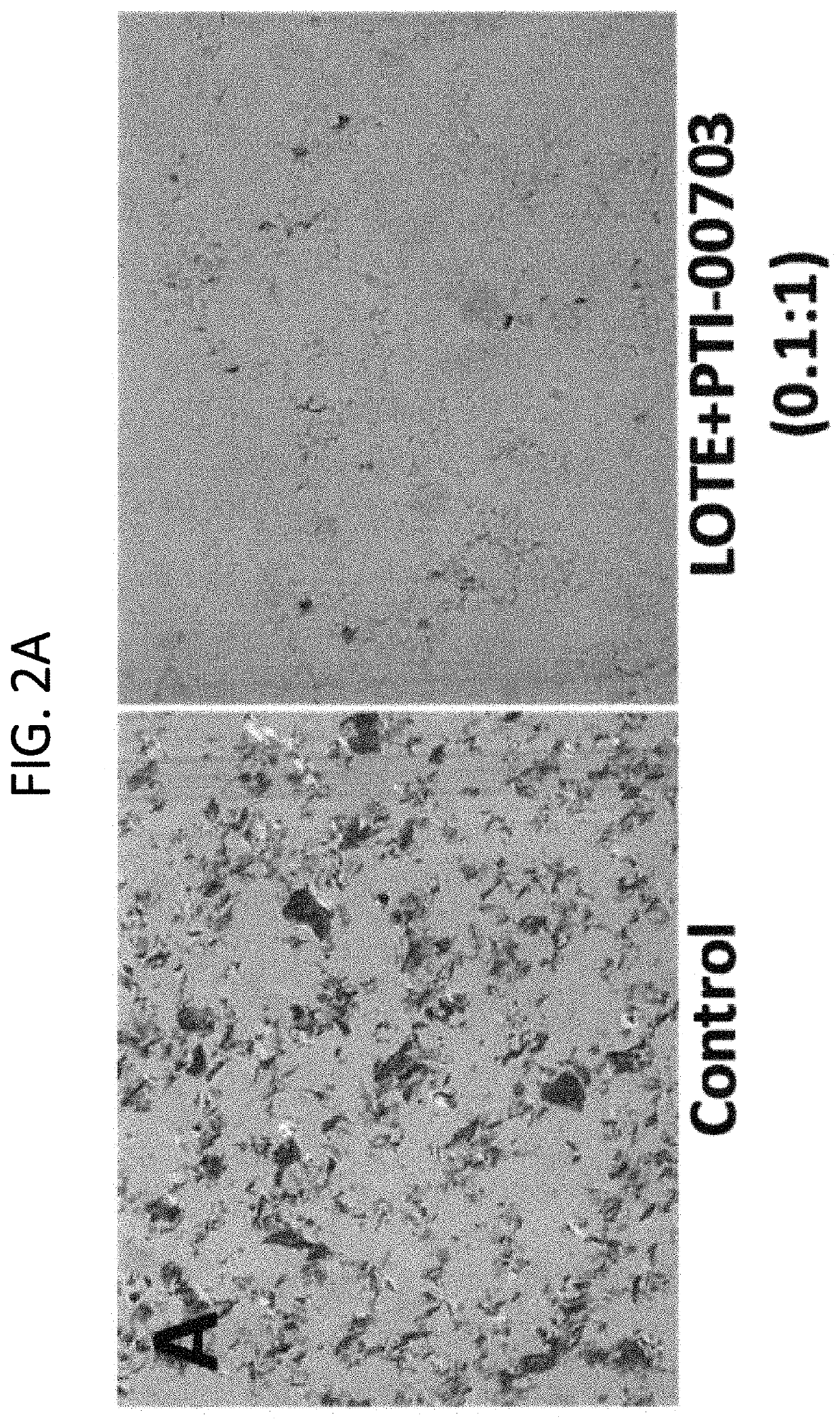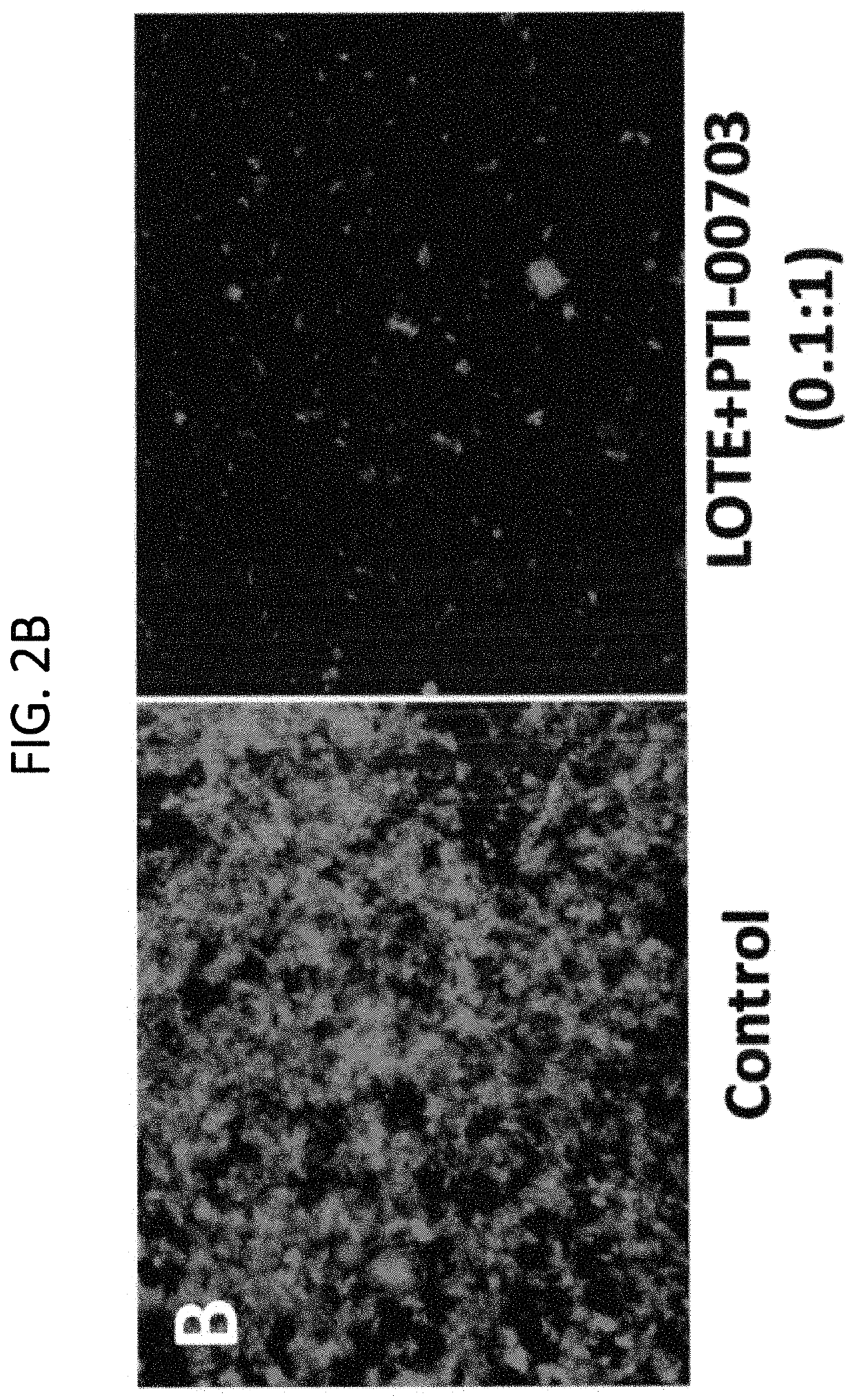Compositions and methods for the treatment of “plaques and tangles” in humans and animals
- Summary
- Abstract
- Description
- Claims
- Application Information
AI Technical Summary
Benefits of technology
Problems solved by technology
Method used
Image
Examples
example 1
n / Inhibition of Alzheimer's Aβ Fibrils or Aggregates
[0155]The compositions described herein were found to be potent disrupter / inhibitors of Aβ protein fibrils or aggregates. This example studies the efficacy of the compositions to cause disassembly / disruption / disaggregation of pre-formed amyloid fibrils of Alzheimer's disease (i.e. consisting of Aβ 1-42) was analyzed.
Part A: Thioflavin T Fluorometry
[0156]In this study, Thioflavin T fluorometry was used to determine the effects of the compositions. Thioflavin T specifically binds to fibrillary amyloid, and this binding produces a fluorescence enhancement at 485 nm that is directly proportional to the number of amyloid fibrils formed. The higher the fluorescence, the greater the number of amyloid fibrils formed (Nakai et al., Lab. Invest. 65:104-110, 1991; Levine III, Protein Sci. 2:404-410, 1993; Amyloid: Int. J. Exp. Clin. Invest. 2:1-6, 1995).
[0157]In this study, 40 μl of a 1 mg / ml solution (in distilled water) or pre-fibrillized h...
example 2
n / Disruption of the In Vitro Conversion of Aβ to β-Sheet Containing Fibril Structures Part A: Thioflavin T Fluorometry
[0182]To test whether the compositions described herein, can inhibit the β-sheet formation of Aβ, the same Thioflavin T assay as described in Example 1 is utilized, but with Aβ 1-40 as a substrate instead. Similar to Aβ 1-42, Aβ 1-40 forms Thioflavin T positive aggregates but requires >24 h incubation at 37° C. shaking to become fully fibrillarized. Since Aβ 1-40 is in a non-fibrillar state at the start of the assay, this protein can be aggregated in the presence of compositions to measure aggregation inhibition. Lyophilized human Aβ 1-40 (rPeptide) is dissolved to 1 mg / mL (220 μM) in dH20. In separate test tubes, test composition stocks are prepared in PBS at various concentrations such that final reactions containing equal volumes of the test composition stocks and the Aβ solution would result in a final Aβ concentration of 0.5 mg / mL (110 μM) with test composition:...
example 3
combinant Tau Repeat Domain for In Vitro Screening of Tau Aggregation Inhibitors
[0188]In previous studies relating to in vitro screening for identification of tau aggregation inhibitors, the present Inventors found that under the same experimental conditions, formation of paired helical filaments (PRFs) from commercially-purchased full-length tau protein (Tau441; from rPeptide) was much slower (>11 days; data not shown) than that from the tau repeat domain (TauRD; containing Q244-E372 of Tau441) (≥24 hr) (S. Barghorn et al, Methods Mol Biol, 299: 35-51, 2005).
[0189]Because of the remarkably short turn-around time and common aggregation properties, TauRD was used for in vitro screening for tau aggregation inhibitors. Since the TauRD protein was not commercially available, TauRD was prepared in accordance to the following procedure, which is also described in US 2016 / 0250273, which is incorporated by reference for the disclosure of this procedure. A cDNA fragment coding for the human ...
PUM
 Login to View More
Login to View More Abstract
Description
Claims
Application Information
 Login to View More
Login to View More - R&D
- Intellectual Property
- Life Sciences
- Materials
- Tech Scout
- Unparalleled Data Quality
- Higher Quality Content
- 60% Fewer Hallucinations
Browse by: Latest US Patents, China's latest patents, Technical Efficacy Thesaurus, Application Domain, Technology Topic, Popular Technical Reports.
© 2025 PatSnap. All rights reserved.Legal|Privacy policy|Modern Slavery Act Transparency Statement|Sitemap|About US| Contact US: help@patsnap.com



